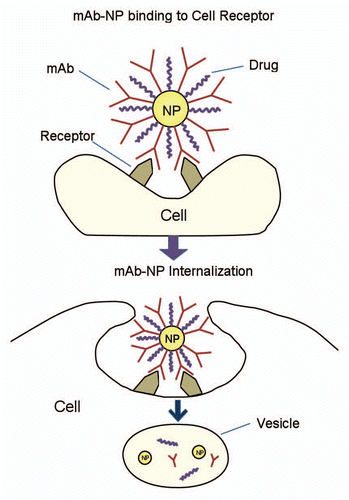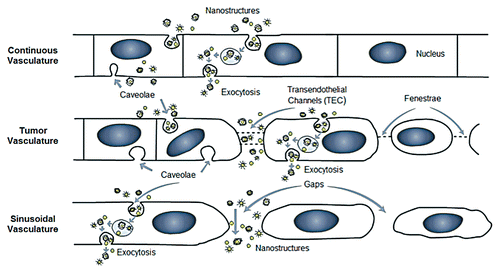Figures & data
Figure 1 Cellular uptake of mAb conjugated nanoparticle. mAb conjugated nanoparticles can be recognized by receptors on the cell membrane. Thus the nanoconjugates are internalized and trafficked along intracellular retrograde transport pathways.

Figure 2 Possible mechanisms of nanostructure extravasation. In the case of a continuous vascular endothelial barrier, nanostructures may be internalized by endothelial cells, e.g., via caveolae, transported via trans-cellular transport mechanisms and escape into the extracellular space via exocytosis. It is generally accepted that extravasation through tight gap junctions is limited to molecules or particles smaller than 10 nm.Citation33,Citation112 In the case of tumor vasculature, nanostructures may also escape the vasculature via transendothelial channels (TEC) and fenestrae. Molecules or particles up to 100 nm diameter may escape the vasculature via this route.Citation1 Where the vasculature is sinusoidal/discontinuous (e.g., liver, spleen), nanostructures and large molecules may readily escape the vasculature.

Table 1 Monoclonal antibodies approved by the US food and drug administration for the treatment of cancer
Table 2 Types of nanomaterials utilized in the treatment of cancer, their advantages and limitations